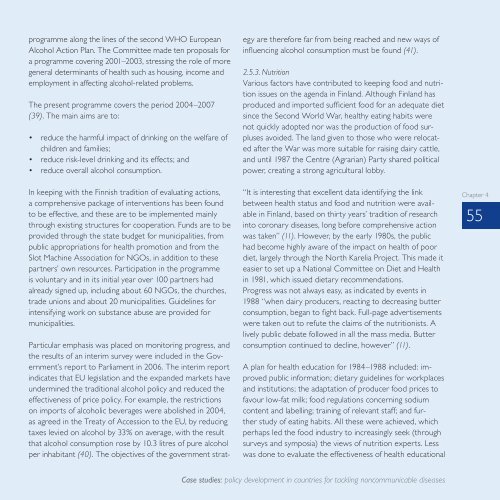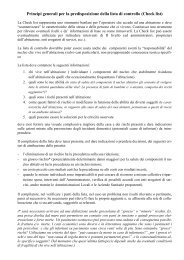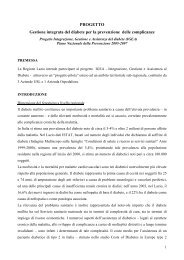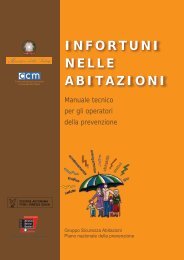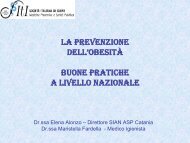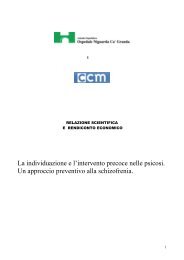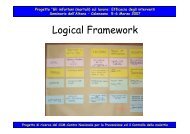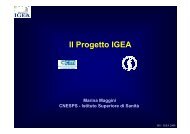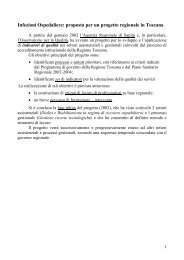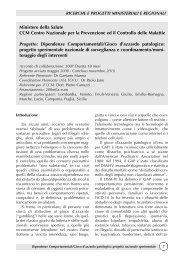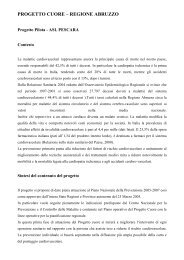Gaining health : analysis of policy development in European ...
Gaining health : analysis of policy development in European ...
Gaining health : analysis of policy development in European ...
Create successful ePaper yourself
Turn your PDF publications into a flip-book with our unique Google optimized e-Paper software.
programme along the l<strong>in</strong>es <strong>of</strong> the second WHO <strong>European</strong><br />
Alcohol Action Plan. The Committee made ten proposals for<br />
a programme cover<strong>in</strong>g 2001–2003, stress<strong>in</strong>g the role <strong>of</strong> more<br />
general determ<strong>in</strong>ants <strong>of</strong> <strong>health</strong> such as hous<strong>in</strong>g, <strong>in</strong>come and<br />
employment <strong>in</strong> affect<strong>in</strong>g alcohol-related problems.<br />
The present programme covers the period 2004–2007<br />
(39). The ma<strong>in</strong> aims are to:<br />
• reduce the harmful impact <strong>of</strong> dr<strong>in</strong>k<strong>in</strong>g on the welfare <strong>of</strong><br />
children and families;<br />
• reduce risk-level dr<strong>in</strong>k<strong>in</strong>g and its effects; and<br />
• reduce overall alcohol consumption.<br />
In keep<strong>in</strong>g with the F<strong>in</strong>nish tradition <strong>of</strong> evaluat<strong>in</strong>g actions,<br />
a comprehensive package <strong>of</strong> <strong>in</strong>terventions has been found<br />
to be effective, and these are to be implemented ma<strong>in</strong>ly<br />
through exist<strong>in</strong>g structures for cooperation. Funds are to be<br />
provided through the state budget for municipalities, from<br />
public appropriations for <strong>health</strong> promotion and from the<br />
Slot Mach<strong>in</strong>e Association for NGOs, <strong>in</strong> addition to these<br />
partners’ own resources. Participation <strong>in</strong> the programme<br />
is voluntary and <strong>in</strong> its <strong>in</strong>itial year over 100 partners had<br />
already signed up, <strong>in</strong>clud<strong>in</strong>g about 60 NGOs, the churches,<br />
trade unions and about 20 municipalities. Guidel<strong>in</strong>es for<br />
<strong>in</strong>tensify<strong>in</strong>g work on substance abuse are provided for<br />
municipalities.<br />
Particular emphasis was placed on monitor<strong>in</strong>g progress, and<br />
the results <strong>of</strong> an <strong>in</strong>terim survey were <strong>in</strong>cluded <strong>in</strong> the Government’s<br />
report to Parliament <strong>in</strong> 2006. The <strong>in</strong>terim report<br />
<strong>in</strong>dicates that EU legislation and the expanded markets have<br />
underm<strong>in</strong>ed the traditional alcohol <strong>policy</strong> and reduced the<br />
effectiveness <strong>of</strong> price <strong>policy</strong>. For example, the restrictions<br />
on imports <strong>of</strong> alcoholic beverages were abolished <strong>in</strong> 2004,<br />
as agreed <strong>in</strong> the Treaty <strong>of</strong> Accession to the EU, by reduc<strong>in</strong>g<br />
taxes levied on alcohol by 33% on average, with the result<br />
that alcohol consumption rose by 10.3 litres <strong>of</strong> pure alcohol<br />
per <strong>in</strong>habitant (40). The objectives <strong>of</strong> the government strategy<br />
are therefore far from be<strong>in</strong>g reached and new ways <strong>of</strong><br />
<strong>in</strong>fluenc<strong>in</strong>g alcohol consumption must be found (41).<br />
2.5.3. Nutrition<br />
Various factors have contributed to keep<strong>in</strong>g food and nutrition<br />
issues on the agenda <strong>in</strong> F<strong>in</strong>land. Although F<strong>in</strong>land has<br />
produced and imported sufficient food for an adequate diet<br />
s<strong>in</strong>ce the Second World War, <strong>health</strong>y eat<strong>in</strong>g habits were<br />
not quickly adopted nor was the production <strong>of</strong> food surpluses<br />
avoided. The land given to those who were relocated<br />
after the War was more suitable for rais<strong>in</strong>g dairy cattle,<br />
and until 1987 the Centre (Agrarian) Party shared political<br />
power, creat<strong>in</strong>g a strong agricultural lobby.<br />
“It is <strong>in</strong>terest<strong>in</strong>g that excellent data identify<strong>in</strong>g the l<strong>in</strong>k<br />
between <strong>health</strong> status and food and nutrition were available<br />
<strong>in</strong> F<strong>in</strong>land, based on thirty years’ tradition <strong>of</strong> research<br />
<strong>in</strong>to coronary diseases, long before comprehensive action<br />
was taken” (11). However, by the early 1980s, the public<br />
had become highly aware <strong>of</strong> the impact on <strong>health</strong> <strong>of</strong> poor<br />
diet, largely through the North Karelia Project. This made it<br />
easier to set up a National Committee on Diet and Health<br />
<strong>in</strong> 1981, which issued dietary recommendations.<br />
Progress was not always easy, as <strong>in</strong>dicated by events <strong>in</strong><br />
1988 “when dairy producers, react<strong>in</strong>g to decreas<strong>in</strong>g butter<br />
consumption, began to fight back. Full-page advertisements<br />
were taken out to refute the claims <strong>of</strong> the nutritionists. A<br />
lively public debate followed <strong>in</strong> all the mass media. Butter<br />
consumption cont<strong>in</strong>ued to decl<strong>in</strong>e, however” (11).<br />
A plan for <strong>health</strong> education for 1984–1988 <strong>in</strong>cluded: improved<br />
public <strong>in</strong>formation; dietary guidel<strong>in</strong>es for workplaces<br />
and <strong>in</strong>stitutions; the adaptation <strong>of</strong> producer food prices to<br />
favour low-fat milk; food regulations concern<strong>in</strong>g sodium<br />
content and labell<strong>in</strong>g; tra<strong>in</strong><strong>in</strong>g <strong>of</strong> relevant staff; and further<br />
study <strong>of</strong> eat<strong>in</strong>g habits. All these were achieved, which<br />
perhaps led the food <strong>in</strong>dustry to <strong>in</strong>creas<strong>in</strong>gly seek (through<br />
surveys and symposia) the views <strong>of</strong> nutrition experts. Less<br />
was done to evaluate the effectiveness <strong>of</strong> <strong>health</strong> educational<br />
Chapter 4<br />
55<br />
Case studies: <strong>policy</strong> <strong>development</strong> <strong>in</strong> countries for tackl<strong>in</strong>g noncommunicable diseases


